Gothic Revival architecture was developed in Poland mainly after the country was partitioned between Prussia, Austria and Russia. It was popular especially in the Prussian partition of Poland. Gothic Revival architecture In Poland often has certain features, derived from the characteristic Polish Brick Gothic architecture style. Churches, schools, post offices, government buildings and palaces were often built in this style. Notable authors of the Polish Gothic Revival style are Jan Sas Zubrzycki, Feliks Księżarski, Józef Pius Dziekoński, and Enrico Marconi.[1]
Gallery
- Churches and chapels
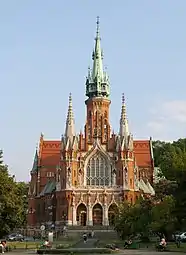
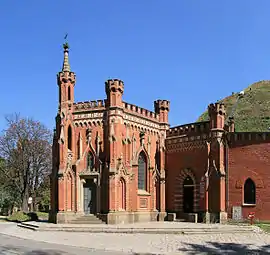 Blessed Bronisława Chapel, Kraków
Blessed Bronisława Chapel, Kraków Białystok Cathedral, Białystok
Białystok Cathedral, Białystok.jpg.webp) Łódź Cathedral, Łódź
Łódź Cathedral, Łódź Holy Family Church, Tarnów
Holy Family Church, Tarnów.jpg.webp)
 Karl Scheibler's Chapel, Łódź
Karl Scheibler's Chapel, Łódź St. John Church, Sokołów Małopolski
St. John Church, Sokołów Małopolski St. Francis of Assisi Church, Gdańsk
St. Francis of Assisi Church, Gdańsk Ełk Cathedral, Ełk
Ełk Cathedral, Ełk St. George Church, Sopot
St. George Church, Sopot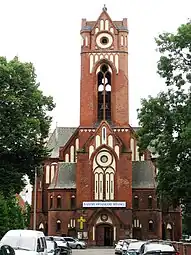 Immaculate Heart of St. Mary Church, Grudziądz
Immaculate Heart of St. Mary Church, Grudziądz
- Post offices
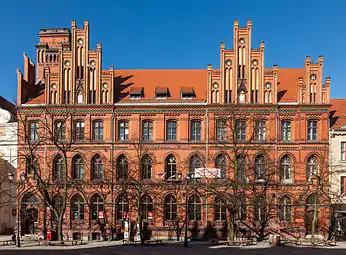 Main Post Office, Toruń
Main Post Office, Toruń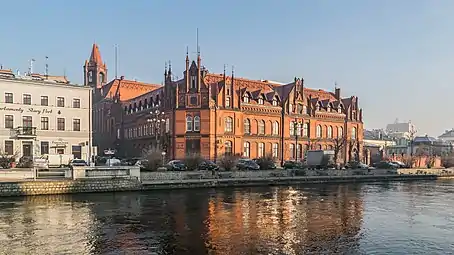 Main Post Office, Bydgoszcz
Main Post Office, Bydgoszcz Main Post Office, Chorzów
Main Post Office, Chorzów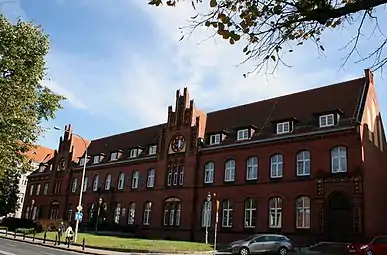 Main Post Office, Olsztyn
Main Post Office, Olsztyn
- Town halls
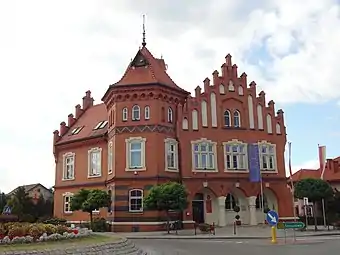

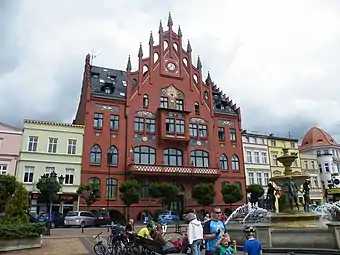
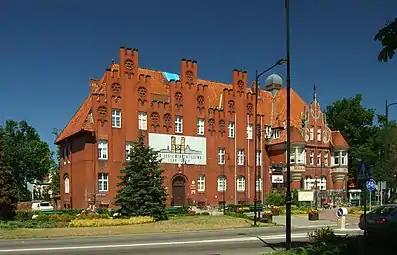
.JPG.webp)
.jpg.webp)


- Houses

.jpg.webp)

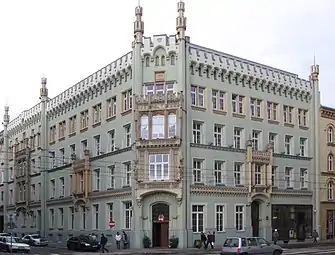
.jpg.webp)
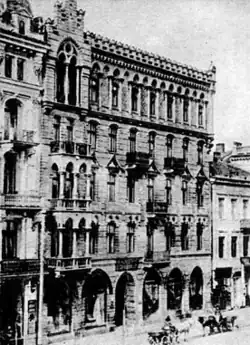
- Other buildings
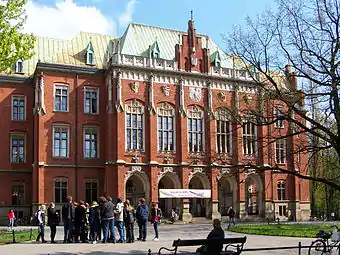
 Gothic House, Czartoryski palace complex, Puławy
Gothic House, Czartoryski palace complex, Puławy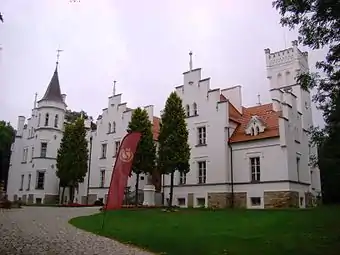 Palace, Sulisław
Palace, Sulisław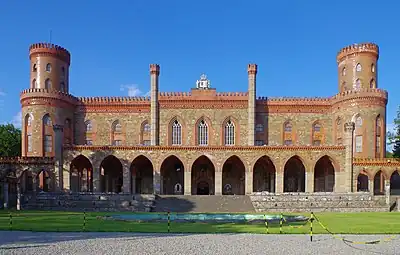 Castle, Kamieniec Ząbkowicki
Castle, Kamieniec Ząbkowicki
See also
References
- ↑ Bowe, Nicola Gordon, ed. (1993). Art and the national dream: the search for vernacular expression in turn-of-the-century design. Blackrock, Co. Dublin, Ireland: Irish Academic Press. ISBN 978-0-7165-2491-5.
This article is issued from Wikipedia. The text is licensed under Creative Commons - Attribution - Sharealike. Additional terms may apply for the media files.